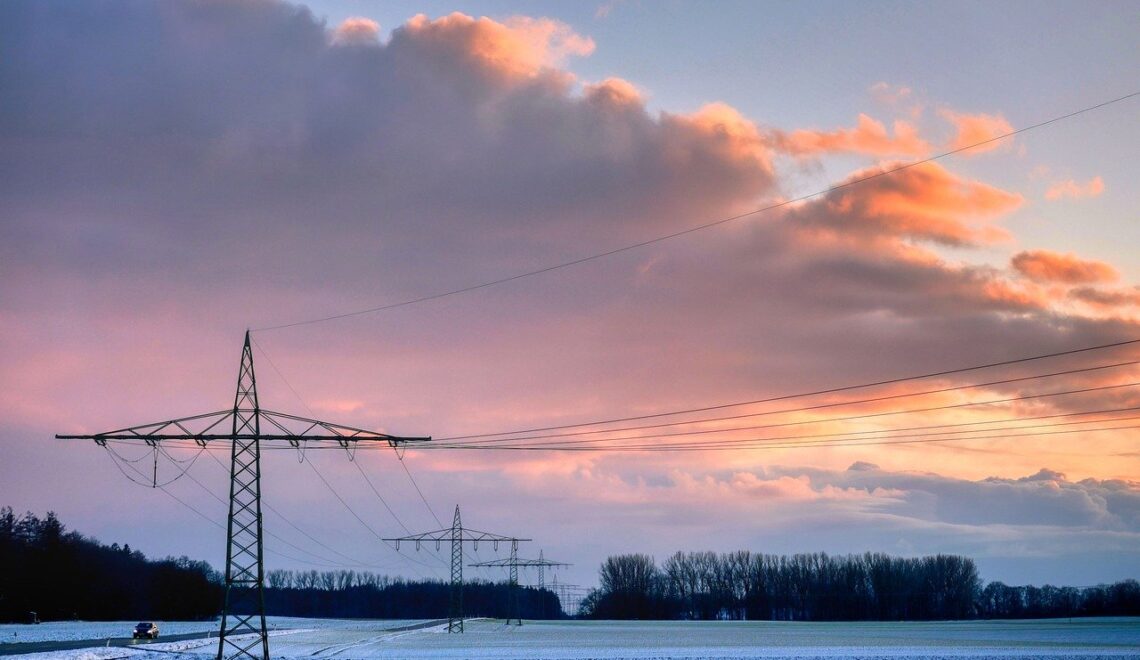Due to existing multi-dimensional social injustices, some gender groups experience climate change more unduly than others. It is therefore necessary that international climate law is intersectional and gender-responsive. Currently, on one hand, legal provisions developed under the United Nations Framework Convention on Climate Change (UNFCCC) feature gender equality as a core element. On the other hand, the process is constrained by political considerations, has a rather slow development and presents the need for a more inclusive approach as a whole.
RAIHANATUL JANNAT1,2
1University of Eastern Finland (UEF)
2Center for Climate Change, Energy and Environmental Law (CCEEL)
Climate change does not discriminate, in the sense that it adversely affects both physical and social environments (IPCC, 2022). However, due to existing multi-dimensional injustices within societies, some human groups may experience climate change disproportionately based on their perceived gender, race and social identities and economic status (IPCC, 2022). Widespread gender inequality in societies also ensure that women as a group are more vulnerable to the impacts of climate change through having lesser social and political standings than men (UNFCCC, 2022). At the same time, women’s experiences also vary depending on the societal designs of the regions and their economic realities: such as women groups from wealthy economies in the global North may experience these impacts less prominently than other women groups from developing economies in the global South (IPCC, 2022). In general, gender inequality negatively affects women’s developmental growth and opportunities that can otherwise be utilised to tackle climate change and aggravate their existing social vulnerabilities, which has the capacity to exacerbate the impacts of climate change that they experience.
As such, climate action is most effective when it is intersectional and can address the needs and considerations for all gender groups, allow their full participation in the designing and implementation of the measures, and contribute to social stability and equality (UNFCCC, 2022). At the international level, the UNFCCC is one in the mosaic of actors that govern climate action globally. However it is the prime entity that provides the framework basis for developing a substantial body of international climate law. This amalgamation of international climate law is fragmented and consists of complex combinations between principles, rules, regulations and recommendations, and interactions with other areas of international regulation that has relevance for governing climate action (Bodansky, 2017). In international climate law, adaptation is understood to be the action that allows human groups to better adjust to and cope with the perceived and expected changes, and exploit beneficial opportunities when available (IPCC, 2022). The goal of climate adaptation is twofold: i) to reduce the existing vulnerabilities of human groups and equip them to respond to the current impacts of climate change, and ii) further strengthen their capacity to adapt to climate impacts in the future by building on their resilience to climate change.
Gender-responsive climate adaptation encompasses the understanding of how gender inequality undermines inclusivity and continues to bolster discrimination within societies, and how this poses a risk to seriously impede climate action in the future (Morrow 2017). In practice, gender-responsive climate adaptation may manifest as initiatives or opportunities that contribute to the developmental growth of specific gender groups, but it is most important that any adaptation planning is intersectional and can address the needs for all gender groups. Adaptation measures that are not gender-responsive or have a biased focus on one gender can further worsen climate impacts by upholding society’s discriminatory power dynamics, negatively contributing to the existing vulnerabilities and failing to initiate a deep societal transformation that limits gender inequality from exacerbating climate impacts and vice versa. In the context of the Arctic at the moment, on one hand, resource-based industries have a biased male focus, and resource development in the region ignores needs of women as a group. On the other hand, scientific studies exploring gendered impacts of climate change in the region many times use prefixed assumptions and have a biased focus on the indigenous female experiences, and mostly overlook the experiences of men as a group (Oddsdóttir, 2021). Such gender-specific and gender-prescriptive approaches can directly undermine intersectionality and further contribute to the vulnerabilities of women and girls in the Arctic.
Despite the interlinkages between climate action and gender equality, it took a long time for the UNFCCC to specifically address the gendered impacts of climate change through international law. From its inception, the UNFCCC sought to coordinate global climate action with emphasis on technical-economic solutions for climate mitigation and some development provisions for those country groups especially vulnerable to climate change (Bodansky, 2017). The first direct connection between gender equality and climate action came through the Intergovernmental Panel on Climate Change (IPCC) in 2014. Since then, however, climate negotiations increasingly mention gender-responsiveness and it is now featured as a crucial element in many climate adaptation instruments and agendas.
The Paris Agreement, which is one of the treaties under the UNFCCC and a landmark legal instrument for global climate action, imposes mandatory requirements and upholds non-mandatory recommendations for its country parties making several references to the need for gender-responsive climate adaptation (Bodansky, 2017). The UNFCCC’s National Adaptation Plans process obliges countries to communicate and update their adaptation priorities and implementation plans whereby countries are able to design and develop adaptation measures that integrate social and gender considerations and contribute to gender equality. The UNFCCC’s Enhanced Lima Work Programme and its annexed Gender Action Plan also reiterates the need for context-specific gender-responsive climate action by upholding the interlinkages between climate action and sustainable development (UNFCCC Decision 3/CP.25, 2019). However, the current Gender Action Plan process is limited in its application as it focuses on mainstreaming gender-equality within the UNFCCC process only and does not monitor the progress on the ground.
From an optimistic viewpoint, it is reassuring to witness the rise in awareness for gender-responsive climate adaptation in the UNFCCC process. At the same time, however, the reality stands that global climate action is still very much driven by economic interests and susceptible to a technocratic attitude, as opposed to wholeheartedly embracing intersectional societal consideration and the path towards a just transition that shapes sustainable development (Morrow, 2021). Moreover, the international climate regime has limited enforcing capabilities and is politically confined to a ‘persuasive authority’ role. As such, even though there are some compelling instruments in place which are advancing gender-responsiveness in climate adaptation action, the current progress is at a much slower pace than desired and fails to initiate the transformational shift in societal norms for a better future (Morrow, 2021). Thus, the way forward for gender-responsive climate adaptation is better served by simultaneous developments on several fronts, including but not limited to:
- Legal research and academic studies that broaden the strict peripheries of international climate law and support a broader and more inclusive view of law. This would provide the field of climate adaptation a more diverse choice of tools, approaches and actors to incorporate the various social, legal and political understandings required to be adequately gender-responsive.
- Developments within the UNFCCC system that allows for a broader conciliative space between the concepts of climate action and gender equality, and within other international actors and financial institutions that also contribute to the international climate governance ecosystem as a whole.
- Developing better enforcing mechanisms in the UNFCCC system while balancing and upholding the existing bottom-up approaches that allow country parties to design and develop gender-responsive adaptation as per local and regional needs.
- Stronger support and better funding opportunities from the global community to actors at the local levels working on adaptation actions so that societal and political constraints maybe reduced, and transformation of the social systems, that contributes to climate-resilient development for women and for all, can be initiated.
Acknowledgements. This Research Letter is based on the ongoing PhD project ‘The role of transnational environmental law in building climate-resilient development of women: case studies from the Finnish Arctic and Bangladesh’ at the UEF Law School. I would like to thank my PhD supervisor Dr. Yulia Yamineva for her kind support with this paper. I am also thankful to the reviewers for their comments on this paper. Funding from the Academy of Finland, Flagship program for Atmospheric and Climate Competence Center (ACCC, Grant no 337552) is also acknowledged.
References
Bodansky, D., J. Brunnée, and L. Rajamani, 2017: Introduction to International Climate Change Law. International climate change law (Oxford University Press 2017), 3–34, http://dx.doi.org/10.2139/ssrn.3000009.
IPCC, 2022: Summary for Policymakers. In: Climate Change 2022: Impacts, Adaptation and Vulnerability. Contribution of Working Group II to the Sixth Assessment Report of the Intergovernmental Panel on Climate Change [Pörtner, H.-O. and Coauthors (eds.)], 20–33. Cambridge University Press, Cambridge, UK and New York, NY, USA, doi:10.1017/9781009325844.001
Morrow, K., 2021: Gender in the global climate governance regime. Gender, Intersectionality and Climate Institutions in Industrialised States, 17–35, https://doi.org/10.4324/9781003052821-3.
Morrow, K., 2017: Integrating gender issues into the global climate change regime. Understanding Climate Change through Gender Relations, 31–44, https://doi.org/10.4324/9781315661605-3.
Oddsdóttir E.E., and Co-authors, 2021: Gender Equality for a Thriving, Sustainable Arctic. Sustainability, 13(19), https://doi.org/10.3390/su131910825.
UNFCCC Decision 3/CP.25, 2019: Enhanced Lima work programme on gender and its gender action plan, Paragraph 11. Accessed 12 December 2019, https://unfccc.int/sites/default/files/resource/cp2019_L03E.pdf.
UNFCCC Synthesis Report, 2022: Dimensions and examples of the gender-differentiated impacts of climate change, the role of women as agents of change and opportunities for women, FCCC/SBI/2022/7. Accessed 1 June 2022, https://unfccc.int/documents/494455.
HOW TO CITE THIS ARTICLE:
Jannat R., 2023: The way forward for gender-responsive climate adaptation in international climate law, FMI’s Clim. Bull. Res. Lett., 5(1), 20–21, https://doi.org/10.35614/ISSN-2341-6408-IK-2023-02-RL
CITATION INFORMATION:
Authors: Raihanatul Jannat
Received: Nov 27, 2022
Accepted: Feb 3, 2023
First online: Feb 21, 2023
Published: May 15, 2023
Journal: FMI’s Climate Bulletin Research Letters
Volume: 5
Issue: 1
Pages: 20–21
DOI: https://doi.org/10.35614/ISSN-2341-6408-IK-2023-02-RL
This article is part of the ACCC Special Issue.
Header image: Adobe Stock




